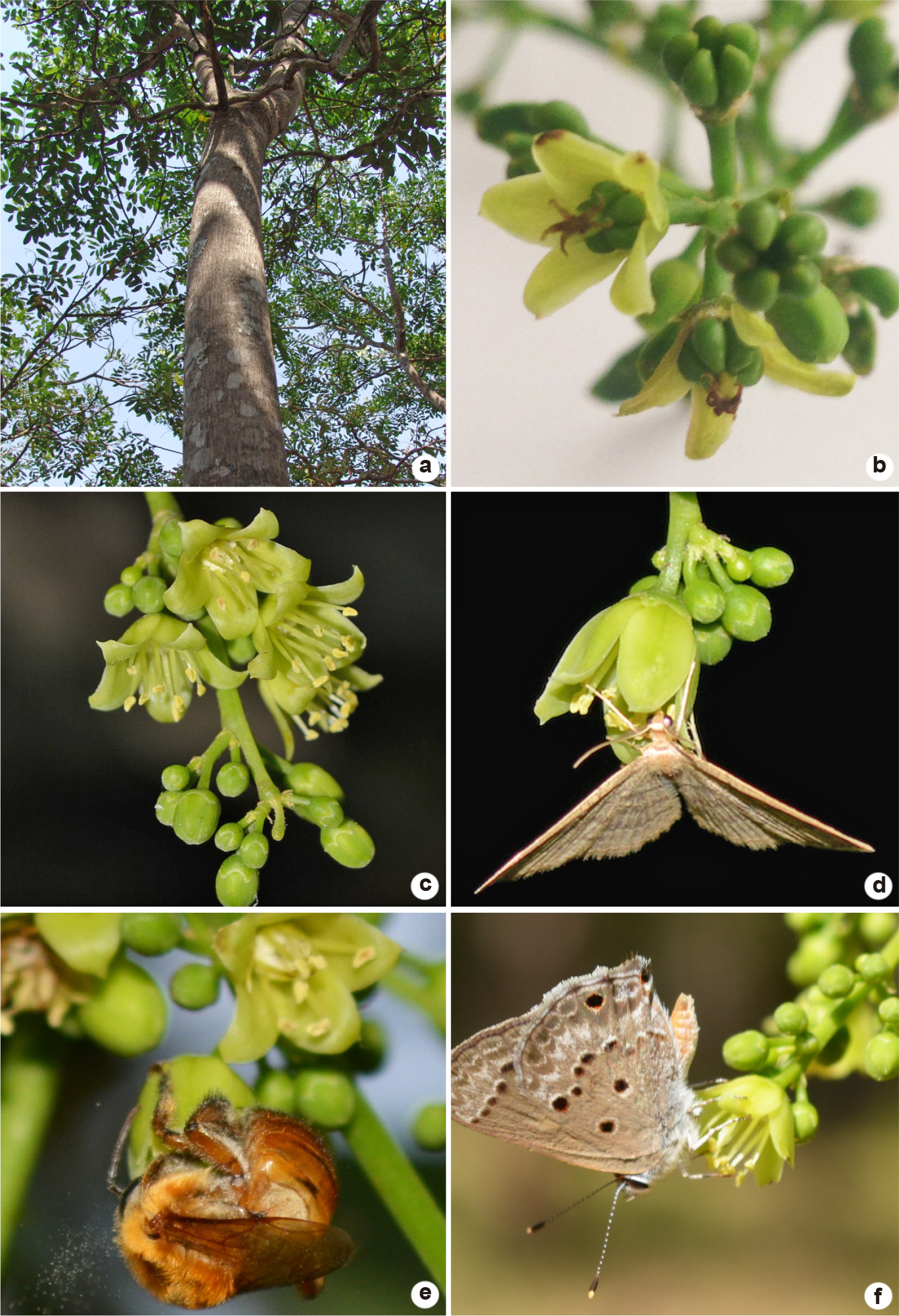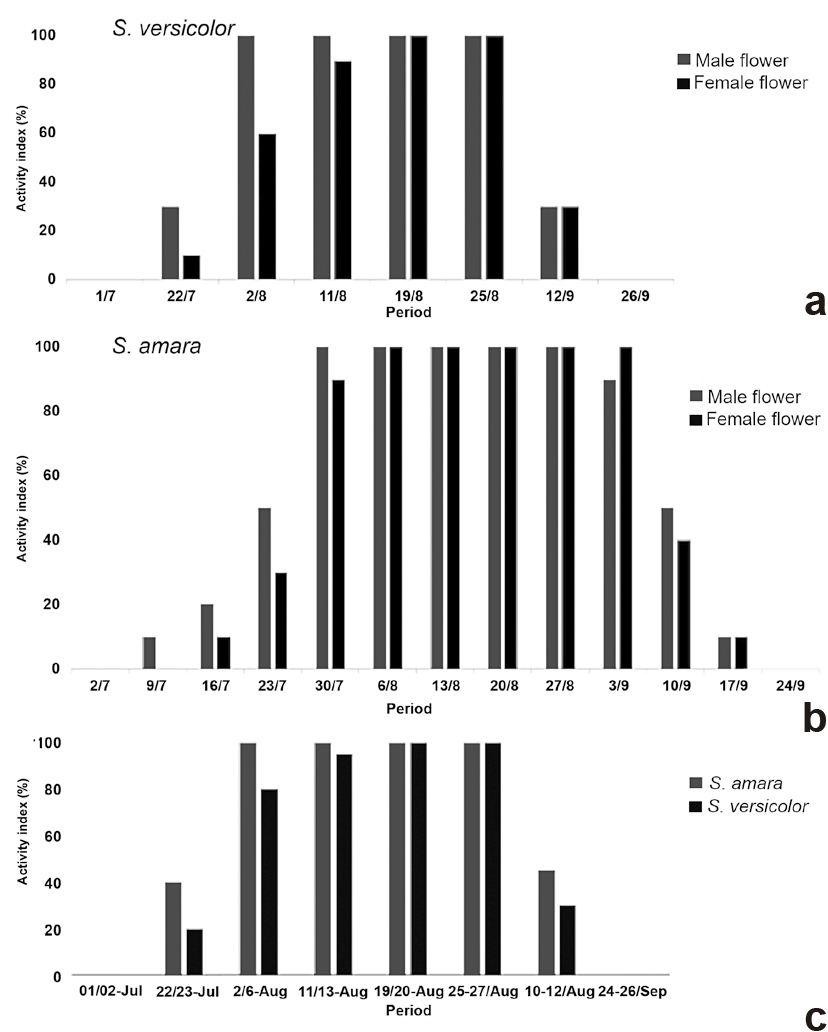Abstract
Several possible correlations between dioecy and eco-morphological features have been suggested to infer the conditions that would favor this sexual system. Dioecy has been associated either with specialized or generalized pollination systems. The genus Simarouba has six dioecious species that seem to have generalized pollinators. In this study, we examined the reproductive biology aspects of two Simarouba species to evaluate which of their eco-morphological attributes may favor dioecy. Our data suggest that S. amara and S. versicolor have small, inconspicuous, and abundant flowers of nocturnal anthesis and are only pollinated by nocturnal moths. They have a stable sexual system with flower, inflorescence, and flowering phenology dimorphism that is part of their pollination system strategies. Male plants of both species produce more flowers per individual than do female plants. A larger floral display may have an essential role in increasing male reproductive success. However, both species showed low reproductive efficacy, especially S. versicolor. The low reproductive efficacy may be due to the lack of pollinators or to the inefficacy of the pollinators available locally.
Key words
Cerrado; dioecy; moth pollination; Simarouba; Simaroubaceae

 Thumbnail
Thumbnail
 Thumbnail
Thumbnail
 Thumbnail
Thumbnail


